Primary resources contain first-hand information, meaning that you are reading the author’s own account on a specific topic or event that s/he participated in. Examples of primary resources include scholarly research articles, books, and diaries. Primary sources such as research articles often do not explain terminology and theoretical principles in detail. Thus, readers of primary scholarly research should have the foundational knowledge of the subject area. Use primary resources to obtain a first-hand account of an actual event and identify original research done in a field. For many of your papers, the use of primary resources will be a requirement.
Examples of a primary source are:
- Original documents such as diaries, speeches, manuscripts, letters, interviews, records, eyewitness accounts, autobiographies
- Empirical scholarly works such as research articles, clinical reports, case studies, dissertations
- Creative works such as poetry, music, video, photography
How to locate primary research in Hamilton Library:
- From the Library's homepage, begin your search in One Search or the library's various databases
- If you're searching for journal articles, remember to look for articles where the author has conducted original research. A primary research article will include a literature review, methodology, population or set sample, test or measurement, discussion of findings, and usually future research directions.
Examples of primary resources at UH
Includes letters, military orders, and official government programs and invitations during the Philippine Revolution (1896-1898) and the
Philippine American War (1899-1902).
Proquest digital dissertation database. Includes bibliographic citations for the doctoral and masters work of authors from 1,000 graduate schools and universities dating back to 1861. Citations for dissertations from 1980 forward include abstracts, and from 1997 on full-text is available for over 100,000 titles deposited with UMI.
Dissertations and Theses at University of Hawaii provides access to complete full text of University of Hawaii theses and dissertations from 1996 to present. Use Dissertations & Theses for citations, abstracts, and full text of work from other institutions.
NOTE: If you use an ad blocker, you may receive error messages when using certain functions in ProQuest databases. Please whitelist search-proquest-com.eres.library.manoa.hawaii.edu and search.proquest.com to avoid such errors.
Access to Hawai’i Congressional Papers Collection, Manuscript Collections, University Archives
Access to thousands of images from around the world.
Secondary sources describe, summarize, or discuss information or details originally presented in another source; meaning the author, in most cases, did not participate in the event. This type of source is written for a broad audience and will include definitions of discipline-specific terms, history relating to the topic, significant theories and principles, and summaries of major studies/events as related to the topic.
Secondary sources were created by someone who did not experience first-hand or participate in the events or conditions you’re researching. For a historical research project, secondary sources are generally scholarly books and articles.
A secondary source interprets and analyzes primary sources. These sources are one or more steps removed from the event. Secondary sources may contain pictures, quotes or graphics of primary sources.
Use secondary sources to obtain an overview of a topic and/or identify primary resources. Refrain from including such resources in an annotated bibliography for doctoral-level work unless there is a good reason.
Examples of a secondary source are:
- Publications such as textbooks, magazine articles, book reviews, commentaries, encyclopedias, almanacs
Locate secondary resources in Hamilton Library within One Search and the databases outlined below.
Searching for Articles in Scholarly Journals at the UHM Library
Use the Online Databases through the UHM Library
(Valid UHM username and password are required)
Step 1: Go to http://library.manoa.hawaii.edu/
Step 2: Click Databases.
Step 3: Here are some databases that you can use for your research.
The premier business and management database providing extensive coverage of North America and the world.
- Academic Search Complete
Provides full text for 3,288 scholarly publications covering academic areas of study including social sciences, humanities, education, computer sciences, engineering, language and linguistics, arts & literature, medical sciences, and ethnic studies.
- Alt-PressWatch
Alt-PressWatch is a full text database comprised of the newspapers, magazines and journals of the alternative and independent press. Current coverage includes approximately 100 titles going back to 1995. NOTE: Only 2 users allowed at one time. If you cannot login, try again later.
The CIPPA database provides a selective indexing of articles found in over one hundred popular magazines, journals and leading newspapers published from 1988 to the present.
Search over 10,000 full text journals in more than 50 EBSCOhost databases covering all subjects.
Other Helpful Online Search Tools
- Education About Asia
Association for Asia Studies (AAS) Education About Asia (EAA) access. Free Registration is required to access approximately 900 articles from all thirty-seven back issues of Education About Asia from 1996–2008! Browse or search Tables of Contents.
- Google Scholar
Search the entire open access articles/books and UHM Only databases. Make sure you have set up your preference to the UHM Library. For more inf for the setting http://library.manoa.hawaii.edu/research/tools/googlescholar.html
- US Gov't report/article Search
Search to retrieve reports, articles, and citations by simultaneously searching across multiple databases of the US Government.
STATISTICS on the Philippines


